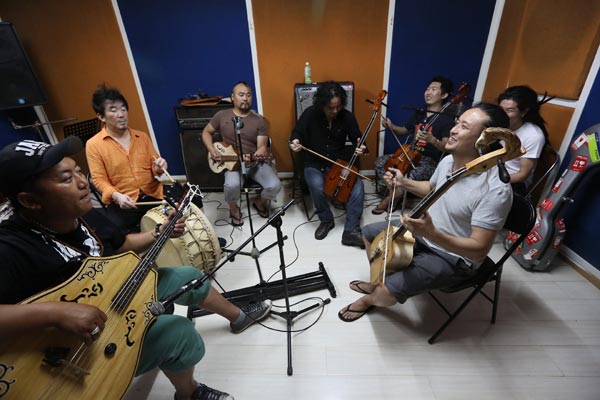 |
|
Mongolian musicians gather in Beijing to prepare for their upcoming tour of North America. Jiang Dong / For China Daily
|
Their performances of morin khuur (Mongolian stringed instrument), khoomei (throat singing) and urtiin duu (long song) made Zhu nostalgic, and he decided to do something to promote the music of his homeland.
"The morin khuur and khoomei are prominently connected with Mongolia's nomad culture. The history dates back to the Mongol empire in the 13th century. This is not only music, but an integral part of rituals and everyday activities of Mongolians," Zhu says.
In 2008, the two-stringed fiddle morin khuur was inscribed as UNESCO's Intangible Cultural Heritage. Beijing was hosting the Olympic Games, and China's culture was in the spotlight. In July that year, Zhu arranged for some Mongolian musicians to perform in the Forbidden City Concert Hall.
It was such an unexpected success that officials of the concert hall wanted them back. Their fame soon led to more opportunities.
The seven musicians formed a band with the name Ih Tsetsn. In Mongolian, ih means wide and generosity while tsetsn means wisdom.
All the members come from herdsmen's families and learned to play their instruments when they were young from their parents or folk artists. Some went on to receive professional training and others joined the local ensembles.
